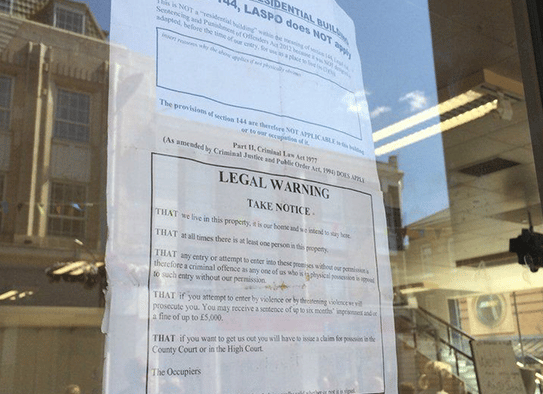Are we becoming over reliant on technology in the protection of Void Properties?

Written by Justin Quigley
The focus of many physical security companies increasingly seems to be more on the detection of threats rather than deterring potential adversaries through effective site hardening. This is clearly evident in the case of void properties. Many security companies are not adequately focused on the deterrence of potential adversaries. In fact, many focus more on detection than deterrence, which is evidenced by their tendency to invest heavily in a range of technologies such as CCTV, video monitoring and intrusion sensors. While these measures may be helpful in detecting threats once they have penetrated a site, they do little to combat such threats. Detection in isolation is largely ineffective. We have all seen post event footage of squatters breaking into empty commercial premises, identities concealed through the wearing of hoodies, to appreciate the limitations of a technology only approach to site security.
Detection as the only approach brings to mind the old adage, ‘closing the gate when the horse has bolted’. There is little benefit in detecting intruders once they are already in your property, especially in the case of squatters, who once inside quickly glue external door locks, dismantle security systems and post a notice on the front door stating that Section 144 LAPSO does not apply!
Detection relies on rapid response, which in the above example is unlikely, unless of course your contracted mobile security officer just happens to be conducting void property inspections at the same moment the squatters ‘liberate’ the property through a conveniently open window. In reality many clients are fortunate if their mobile security makes it to site fast enough to make a difference, following the receipt of detection notifications by the monitoring station. Reliance on the Police as first responders is also problematical and dependent on local resources, the time of the incident and also what competing demands they are dealing with that take priority. Even if the Police do arrive in good time, they are reluctant to get involved, regardless of the fact that the footage from multiple video verification sensors show intruders breaking into the property and in some cases destroying cameras. They are more often preoccupied with the wish to get back to the station as quickly as possible, departing swiftly with the comment, ‘civil matter’! Is this a harsh assessment, possibly, but don’t shoot the messenger, this comes directly from the 14th Edition of the Squatters Handbook!
‘Often the police’s priority is to deal with the situation as quickly as possible and get back to the station’, (p24).
It gets worse!
‘The Police probably receive more training in negotiation techniques than about the laws relating to squatting’, (p25).
Help may be coming, but it’s probably a long way off, I therefore wouldn’t place too much reliance on either the Police or security reaching your site in time to prevent intruders gaining entry. The words from Emperor Honorius spring to mind in his letter to the Britons in 410, ‘look to your own defences’!
Time for a change of direction and the relearning of security basics. Effective security is predicated on the establishment of multiple layers of controls, (defence in depth), consisting of site hardening measures such as fencing, security screens, anti-climb controls (deterrence & delay), technology to confirm intrusion (detection) and of course an effective response (security personnel).
A fundamental theory of crime motivation, the Routine Activity Theory (RAT), states that when opportunity, motivation and absence of a capable guardian manifest, then the conditions for a crime occur. Site hardening measures remove the opportunity, impact motivation and of course fulfil the requirements of a capable guardian, all of which effectively deter those that can be deterred.
Squatters or any adversaries targeting void properties want to get inside as fast as possible. They don’t want to be seen trying to force their way in. Any measure which delays effectively deters. As we are already on the subject of crime motivation theory, there’s no harm throwing another one into the mix, this time Rational Choice Theory. RCT argues that faced with the prospect of being caught in the act, perpetrators will make the rational choice not to commit a crime. Delaying measures increase the time it takes to break into a property, increases the risk of being apprehended, which in turn deters the adversary.
A multifaceted approach is the only logical solution. Steel screens on windows, metal security doors, anti-climb measures, lighting, fencing, Video verification systems and CCTV. Such an approach ensures system redundancy, enables intrusion confirmation and as stated encourages potential adversaries to seek softer targets elsewhere, all at a fraction of the cost of a deployed security officer, or the cost of removing squatters and refurbishing the property following their unwelcome visit.
Most of this is common sense stuff, it therefore beggars belief that the basics are often overlooked. If you make it hard for them to get in they will target someone else’s property!











